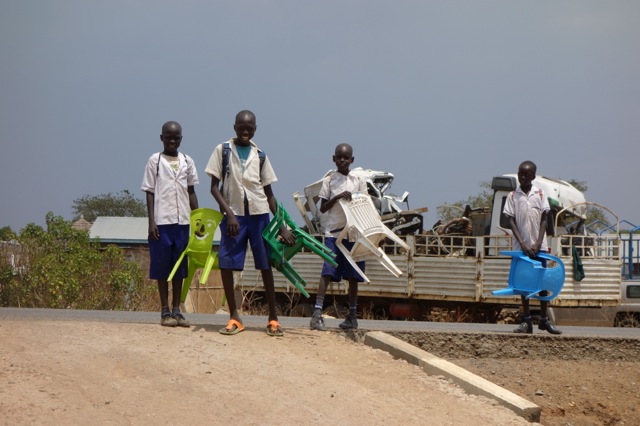By Andy Hill, MediaTrain Director
Fact sheets. Check.
Messages for the interview. Check
Background data and figures. Check.
Soundbyte. Check.
So you are putting together your preparation list for a media encounter. A visiting journalist or journalists is/are coming to interview you about what you do and why anyone should care.
You’ve prepared some key messages for that interview and tested them at home with your family and in the office with straight-taking staff.
You’ve got fact sheets prepared and ready to distribute – all the key numbers and data that show how successful you are in what you are doing, and what the challenges are.
And you’ve prepared a soundbyte like that pesky MediaTrain trainer taught you. “One golden quote that sings and sheds light on everything you are achieving or want to.”
So you’re prepared, right?
Not really. Nothing adds context and immediacy to a journalist’s story better than getting out of the office and into the “field”, be that a factory, a development project or somewhere that shows the human face of what you do and what you want to talk about.
I am reminded of this while sitting on a dusty border crossing between South Sudan and Uganda, a place called Nimule. I am working for a client, TradeMark East Africa (TMEA), which helps East African states streamline their trade because where there is trade there is prosperity, and the region is in urgent need of that. For the past few days I have been visiting government offices and departments interviewing key officials about how TMEA is helping them cut down the time it takes to get goods across the border and increase the revenue they get from customs and excise duties to diversify away from oil, South Sudan’s main export. It’s been a fascinating few days and my notebook is crammed with figures that show how revenue has doubled in the past year, how the time it takes to get a truck across at Nimule has been slashed from five days to one; how the country is building a Bureau of Standards to make sure that the goods which do cross are fit for consumption and not being dumped.
I could write my stories now using that data, and the quotes I have garnered. But a field trip has been organized and one morning I find myself standing in dust storms kicked up by turning trucks at the Nimule Customs centre to see how it has all been done. I meet keen officials anxious to show me how they have instituted new procedures. I watch them unload a truck in a new inspection shed to detect smuggled goods and expired ones.
I sit in as Customs Officers learn how to do their jobs on computers, rather than in ledgers and by hand. My eyes and senses feast on the activity and the energy. My story comes alive. And on the way back to Juba I see the kids in the photos on their way back from school carrying the chairs they take to sit on under the tree where they study every day. This is what development is about, I realise, about finding the money to build them a proper school where the chairs stay overnight and the students come every day.
News is essentially about Change and the Conflicts that wrestle with each other – supply and demand, revenue against shortfall, and expectations against realities – that are behind that Change. But more than anything it’s about people, about human beings.
Those officials gave me the data, but the people I see give me what journalists call the Colour, the human element that lifts stories from out behind comfortable desks and people wearing officials’ suits, and makes them real.
These are the “Three C’s” of successful communication.
And a field trip is something any bona fide journalist will be grateful for. Remember to add that to your checklist.

